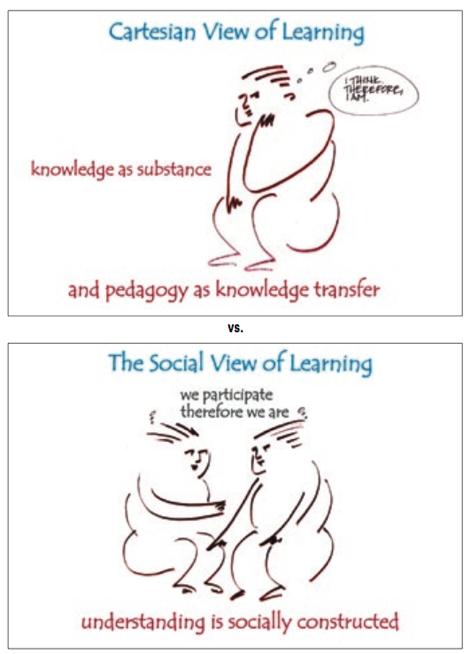Learning 2.0: The Threat (and promise) of Social Interaction
The mere threat of social interaction changes our behavior…if you know your work is going to be put on public display, you’ll be much more motivated to make it good. There is a moment in every blogger’s life when they realize that yes, other people are going to read what they have to say. Perhaps […]
The mere threat of social interaction changes our behavior…if you know your work is going to be put on public display, you’ll be much more motivated to make it good.
There is a moment in every blogger’s life when they realize that yes, other people are going to read what they have to say. Perhaps they assume this from the start, perhaps they develop it the first time they have a wave of traffic come to their site. I can’t tell you how many bloggers have told me “Well, I suppose I have to keep writing my blog now that people have come”, almost as if they weren’t going to continue writing it otherwise. I touched on this some while back in my piece Nine Lessons for Would-Be Bloggers.
But I hadn’t heard that idea articulated clearly until I read this post over at Brian Christiansen’s blog about social interaction in learning environments (I used to work with Brian at UIE)
Brian quotes a paper by John Seely Brown containing the following story from a college professor who explains what happened when he required his students to post their work publicly.
“Because my goal as a teacher is to bring my students into full legitimate participation in the community of instructional technologists as quickly as possible, all student writing was done on public blogs. The writing students did in the first few weeks was interesting but average. In the fourth week, however, I posted a list of links to all the student blogs and mentioned the list on my own blog. I also encouraged the students to start reading one another’s writing. The difference in the writing that next week was startling. Each student wrote significantly more than they had previously. Each piece was more thoughtful. Students commented on each other’s writing and interlinked their pieces to show related or contradicting thoughts. Then one of the student assignments was commented on and linked to from a very prominent blogger. Many people read the student blogs and subscribed to some of them. When these outside comments showed up, indicating that the students really were plugging into the international community’s discourse, the quality of the writing improved again. The power of peer review had been brought to bear on the assignments.”
So the shift to public display, a shift to expected social interaction, changed the way the students learned and the effort they put into their education. If that’s not an incentive to experiment with and use social software I don’t know what is. Social software isn’t just a new way to work, it changes the effort we put into that work. Now there is a sound byte for social media consultants. 🙂
The original article (pdf) by John Seely Brown is here: Minds on Fire. It’s a good read on what Seely Brown calls “Learning 2.0”.
What is Learning 2.0? It’s the shift from a Cartesian view of learning where knowledge is treated as something to be transferred to students (that students merely have to learn some set of knowledge) and instead based on a social view of learning where meaning is socially constructed. Says Brown:
“The emphasis on social learning stands in sharp contrast to the traditional Cartesian view of knowledge and learning—a view that has largely dominated the way education has been structured for over one hundred years. The Cartesian perspective assumes that knowledge is a kind of substance and that pedagogy concerns the best way to transfer this substance from teachers to students. By contrast, instead of starting from the Cartesian premise of “I think, therefore I am,†and from the assumption that knowledge is something that is transferred to the student via various pedagogical strategies, the social view of learning says, “We participate, therefore we are.â€
This perspective shifts the focus of our attention from the content of a subject to the learning activities and human interactions around which that content is situated. This perspective also helps to explain the effectiveness of study groups. Students in these groups can ask questions to clarify areas of uncertainty or confusion, can improve their grasp of the material by hearing the answers to questions from fellow students, and perhaps most powerfully, can take on the role of teacher to help other group members benefit from their understanding (one of the best ways to learn something is, after all, to teach it to others).
